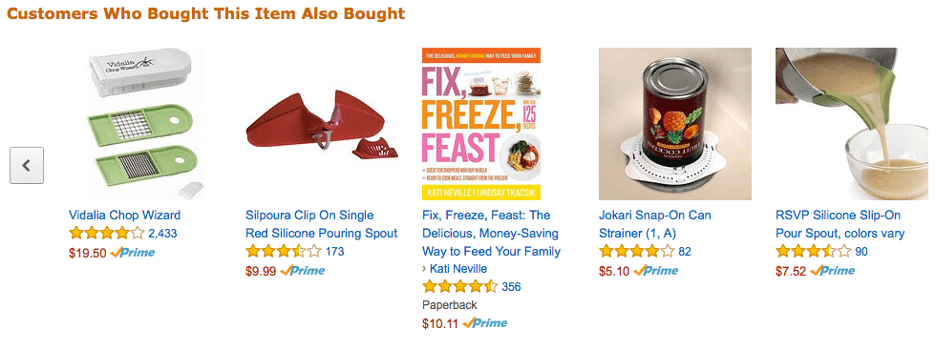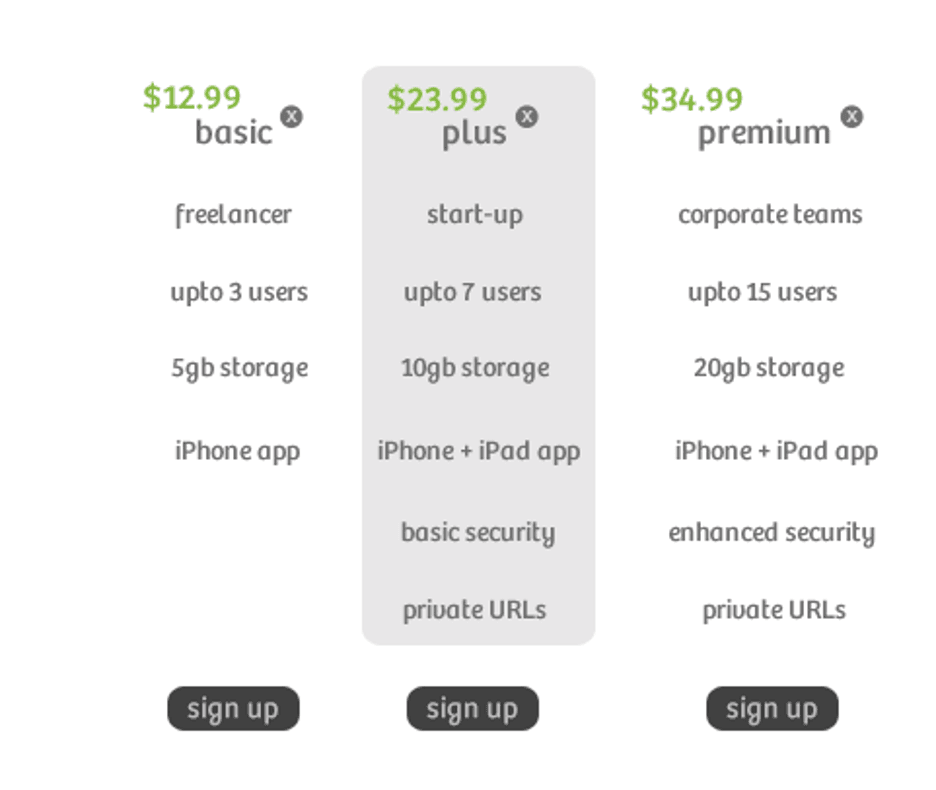Business.com aims to help business owners make informed decisions to support and grow their companies. We research and recommend products and services suitable for various business types, investing thousands of hours each year in this process.
As a business, we need to generate revenue to sustain our content. We have financial relationships with some companies we cover, earning commissions when readers purchase from our partners or share information about their needs. These relationships do not dictate our advice and recommendations. Our editorial team independently evaluates and recommends products and services based on their research and expertise. Learn more about our process and partners here.
The Psychology of Choice: How Your Business Can Leverage Customer Decision-Making
Leverage the psychology of choice to encourage consumers to take action.

Table of Contents
Imagine visiting two different websites for companies in the same industry. One offers you three choices, while the other presents 15. Which one do you think will perform better? Though it seems counterintuitive, the site with fewer options is more likely to convert visitors into customers.
We may think that offering lots of options creates a better customer experience, but too many choices can be overwhelming. According to a phenomenon called the “psychology of choice,” the more options we have, the less likely we are to decide at all. As a business owner, you can learn to use the psychology of choice to your advantage. We’ll explain how to apply it so your customers feel more confident taking action.
What is the psychology of choice?
The psychology of choice is the concept that the more options we have, the less likely we are to make a decision. This term was coined in 2000 by psychologists Sheena Iyengar and Mark Lepper and was made famous by a study that evaluated consumer choices.
In their experiment, Iyengar and Lepper presented shoppers with 24 varieties of jam, asked them to taste each one, and gave them a $1 coupon off any jar. In a separate test, they gave shoppers six jam varieties and offered taste tests but no coupon. Surprisingly, shoppers who visited the larger display and received a coupon were one-tenth as likely to make a purchase.
Since Iyengar and Lepper’s landmark study, ample research has shown that when it comes to consumer choice, fewer options are actually better. Although it may sound counterintuitive, when faced with too many choices, people are more likely to walk away than to select an option.
Here’s what can happen if there are too many options:
- Customers fear they will make the wrong choice.
- The decision becomes more complicated.
- The plentiful options trigger the urge to find additional options.
“In premium sales environments, ‘less’ is only ‘more’ when what remains creates absolute client belief in you,” explained Simon Bowen, founder of The Models Method. “Offering too many options creates decision paralysis, while too few can feel manipulative. The sweet spot is presenting such an unexpectedly commonsense value proposition that customers feel safer and more certain about making a decision.”
10 ways your business can leverage the psychology of choice
It’s crucial to offer your customers the choices they’ll respond to the best, but you should be concerned about overwhelming them. Fortunately, there are ways to leverage the psychology of choice to your business’s and customers’ advantage. Here are 10 tips.
1. Eliminate unnecessary choices for your customers.
Evaluate your product and service offerings, and ask yourself what you can afford to eliminate. How can you streamline your current options to make the user experience more focused and increase sales?
For example, an Italian recipe blog reduced its myriad options on two different pages. This small change increased the blog’s click-through rate (CTR) from 2.7 to 12.3 percent on one page and from 3.6 to 11.5 percent on another.
“When we present clients with too many choices, we slow them down,” cautioned Karey Swartwout of the Swartwout Group. “Folks appreciate clarity. I give them one strong recommendation and a second lesser option, just enough for a sense of agency without creating doubt. That helps them move forward with confidence.”
2. Create clear categories for your offerings.
If you have an online store or offer many products and services and can’t eliminate choices, try creating clearer categories. Consumers are more likely to understand multiple categories than many individual choices because categories help them narrow their options.
3. Find the right number of options for your product.
Studies are somewhat mixed on how many product choices to offer at once. Some say no more than two or three, while others say the sweet spot lies between eight and 15. This variation is likely because the ideal number depends on your specific products and target audience.
In other words, the fewer choices you present, the easier it is to guide your customers on a clear path toward purchasing. This approach helps to prevent the decision-making process from stalling.
4. Provide a default or suggested option.
It’s your job to help customers focus and make the best purchase decision. However, being pushy doesn’t work. Instead, provide them with guidance and resources to help them weigh their options. For example, your website could show a list of features and their prices. Then, present a default or suggested choice that best suits their needs to help them finalize a purchase without feeling overwhelmed or forced.
“One of the most effective ways to combat decision paralysis is by fostering a culture of learning,” noted Mary Beech, chief growth officer at Thorne. “When customers feel equipped with the right information, they gain confidence in their choices. Offering expert articles, interactive guides and personalized recommendations can help simplify their decision-making.”
Even better, personalize your customers’ options; they’ll feel seen and know that you understand their needs. A Jack Morton survey found that 4 in 5 consumers are willing to share personal data (for example, their email address, birthday, age and sex/gender identity) for a better purchasing experience.
5. Provide social comparisons to help narrow customer choices.
Customers want to know what products others have bought and enjoyed, so social comparisons are effective. Amazon does this well by showing related products that people also like or buy:

Although Amazon offers a multitude of products, this feature filters the many options, thus helping consumers narrow down their choices.
6. Simplify your website to streamline the customer experience.
When you’re evaluating your website design, include only essential content on each page. Don’t present all of your options and information in one place. Instead, consider one or two goals you want to achieve for each page, and focus on meeting those goals.
For example, Google’s homepage is a streamlined page with only a search bar. This is one way the search engine drives users toward its intended usage.
7. Provide three pricing options.
Although you don’t want to flood viewers with options, by giving them a few choices, you appeal to their desire for flexibility and control. Experts advise that, when selling product or service packages or tiers, you should offer three pricing options to create an instant comparison model. People often gravitate toward the middle package as a balanced choice.

Instead of comparing your product or service with a competing one, consumers can compare your three pricing packages, thereby increasing the odds they’ll purchase from you.
“When it comes to pricing strategy, there must always be pricing options,” said Reilly Newman, a brand strategist at Motif Brands. “This reframes the decision from ‘if they should work with you’ to ‘how they should work with you.’ That helps guide the buyer to the proper purchase.”
8. Choose the right times to send correspondence.
If you’re sending promotional offers via email marketing campaigns, send them earlier in the day. SendGrid data shows that marketing emails perform the best when they’re sent around 7 a.m. or 11 a.m. local time, with Tuesdays often seeing the highest engagement. These windows align with when people are checking their inboxes but haven’t yet hit peak decision fatigue.
People make countless decisions throughout the day, so their mental energy dwindles by the afternoon. To increase the chances they’ll engage with your message, send your emails when recipients are most alert and receptive — ideally, in the morning.
9. Present only one offer in emails.
Expert marketers have long emphasized the importance of making just one offer when sending marketing emails. When you consider the psychology of choice, it’s easy to see why a single offer is more powerful than multiple confusing options. Focusing on one product, service or offer helps the buyer decide without getting overwhelmed by choices.
Dave Charest, director of small business success at Constant Contact, sees this play out in email outreach every day.
“Too many links, too many offers, or unclear messaging can drive people away instead of bringing them closer,” Charest explained. “Define the main action you want the reader to take away, and then build everything else around that message. It’s not just easier for the customer — it’s easier for you and leads to better results, too.”
10. Understand that less is more.
Want a quick way to increase successful lead conversions? Make your customers’ choices easier by keeping things simple. As the saying goes, less is more.
Focus on how you can reach more of the same customer type. Think about how you can better serve your target audience and increase the authority and perceived value of your offerings.
How does customer decision-making affect your business?
It’s in your company’s best interest to simplify your customers’ decision-making process. Customers want options, but if you give them too many, they may struggle to make a decision at all.
The choices your customers make can have a significant impact on your company’s profits. If you offer too many products or services, customers may have trouble understanding which one is best. And if they can’t choose, they may turn to a competitor with fewer, clearer options.
“My rule of thumb is ‘clarity is kindness,'” said Josh Hargett, senior account executive and sales team lead at Omnisend. “You don’t want to overwhelm the buyer to the point that it makes it harder to make a decision. However, you want to be transparent and set the proper expectations. Buyers put trust in me, and I want that relationship to last long term.”
David Radin, creator of “Time Management in the Age of A.I.” and CEO of Confirmed, explained that simplifying the first purchase can set the stage for higher customer lifetime value. “Even if they buy your lowest-priced offering, it gets them in your ecosystem,” Radin said. “Then you can let them sample your premium offerings and move up when they’re ready, instead of overwhelming them at the start.”
Jamie Johnson contributed to this article.







